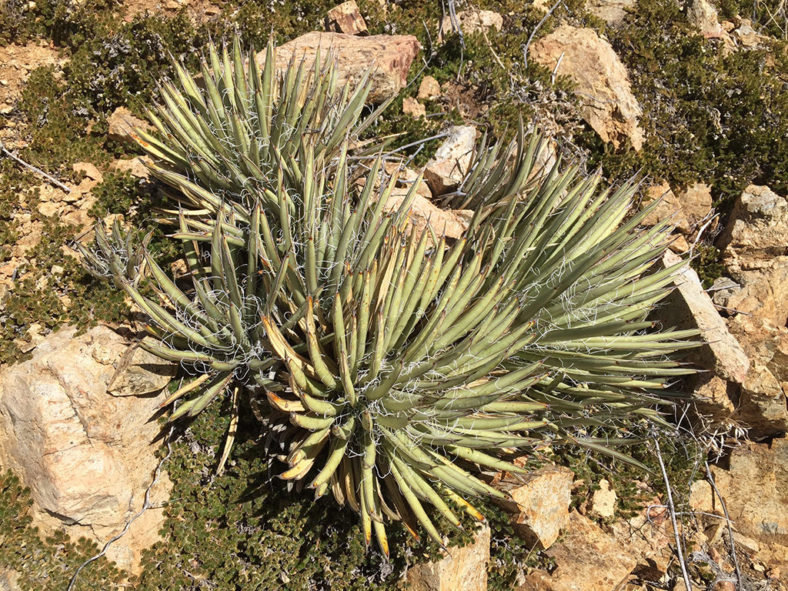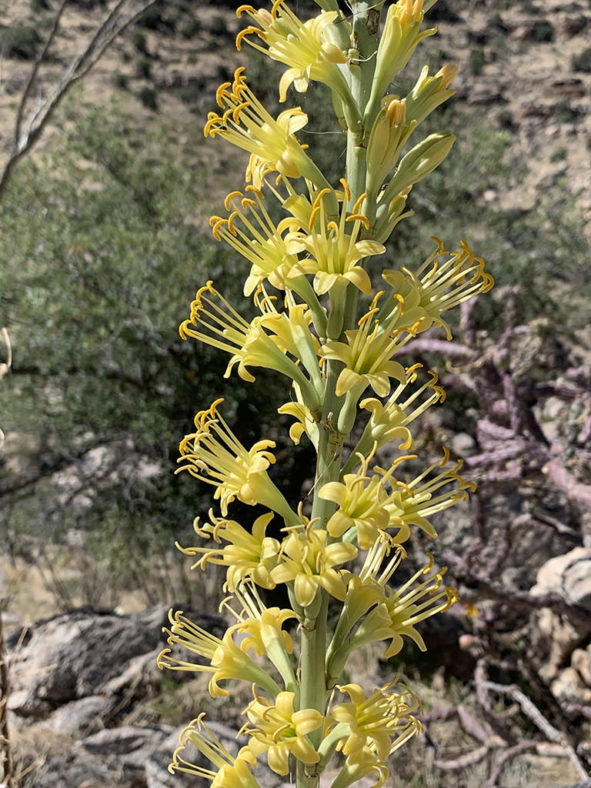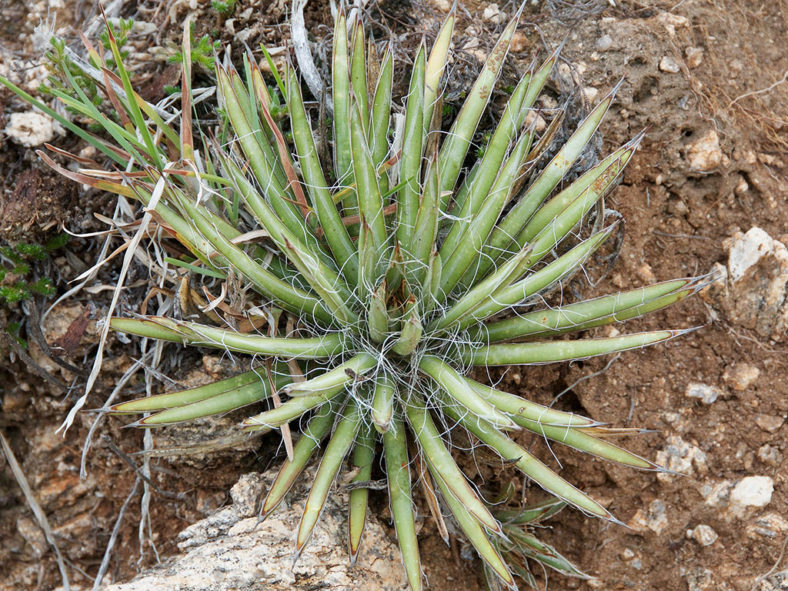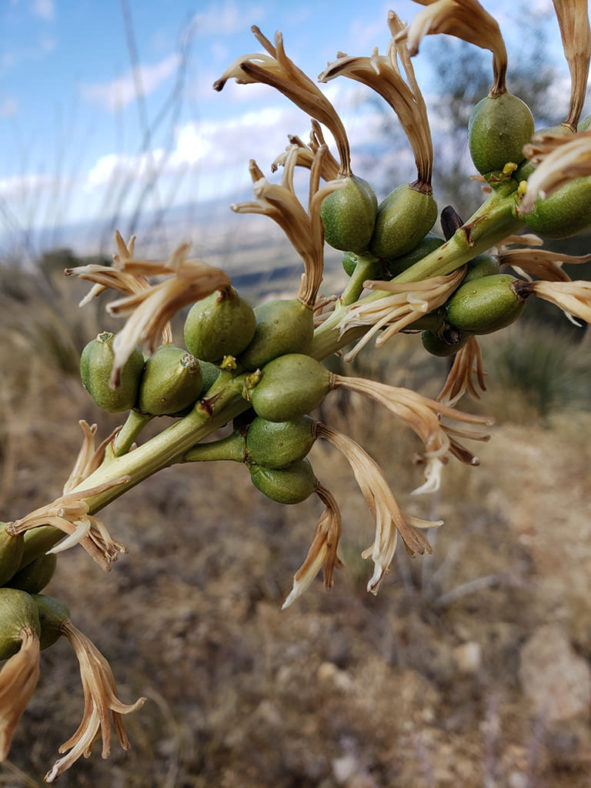Scientific Name
Agave schottii Engelm.
Common Name(s)
Schott's Agave, Schott's Century Plant
Synonym(s)
Agave geminiflora var. sonorae, Agave schottii var. schottii
Scientific Classification
Family: Asparagaceae
Subfamily: Agavoideae
Genus: Agave
Etymology
The specific epithet "schottii (SHOT-ee-eye)" honors Arthur Carl Victor Schott (1814-1875), a German-American artist, topographical engineer, cartographer, botanist, ethnographer, and geologist.
Origin
Agave schottii is native to the United States (Arizona and New Mexico) and Mexico (Chihuahua, Sonora, and Baja California). It grows in gravelly to rocky places, mostly in desert scrub, grasslands, juniper, and oak woodlands at elevations ranging between 2,950 and 6,550 feet (900 and 2,000 m).
Description
Agave schottii is a succulent plant that forms stemless rosettes of linear yellowish-green leaves with or without conspicuous bud prints on both surfaces. The rosettes can grow up to 2 feet (60 cm) tall and 4 feet (1.2 m) in diameter, freely suckering to form a large clump with age. The leaves are mostly erect, broadest near the base, measuring up to 20 inches (50 cm) long and 1 inch (2.5 cm) wide. They have filiferous margins and a brown or grayish apical spine. The fibers are white, erect to spreading, sparse, filiform, and brittle.
The flowers are yellow, funnelform, and appear solitary or in clusters of up to 6 on spicate or subspicate inflorescences from late spring to late summer. They can reach about 0.5 inches (1.1 cm) in length and 0.3 inches (0.8 cm) in diameter. The fruits are obovoid capsules that can grow up to 0.9 inches (2.2 cm) long and contain black seeds.

How to Grow and Care for Agave schottii
Light: Like all Agaves, this plant requires full sun to partial shade. If growing A. schottii indoors, choose a bright, sunny window with as much sun as possible. From spring to fall, it loves going outside.
Soil: A. schottii tolerates most soils with good drainage but prefers sandy or rocky soil.
Temperature: During the growing season, it likes warm temperatures, while in winter, when resting, this succulent enjoys cooler temperatures. A. schottii can withstand temperatures as low as 20 °F (-6.7 °C). USDA Plant Hardiness Zones 9a to 11b, 20 to 50 °F (-6.7 to 10 °C).
Watering: From spring to fall, water thoroughly when the soil becomes dry. In winter, water sparingly about once a month. Plants in containers require more frequent watering than those in the ground.
Fertilizing: Give your A. schottii a small amount of fertilizer in the spring during the first two years. After that, established plants seem to take care of themselves.
Repotting: If you notice your A. schottii becoming pot-bound, repot it with fresh soil in a pot slightly larger than the old one. Give the plant a week or so to readjust before you water it again.
Propagation: Since it can take years to produce seeds, A. schottii is usually propagated by offsets. The best time to remove the offsets is in spring and summer. Sow the seeds in spring.
Learn more at How to Grow and Care for Agave.
Toxicity of Agave schottii
A. schottii is not toxic to humans but may be mildly poisonous to children and pets.
Links
- Back to genus Agave
- Succupedia: Browse succulents by Scientific Name, Common Name, Genus, Family, USDA Hardiness Zone, Origin, or cacti by Genus
Photo Gallery
Click on a photo to see a larger version.


